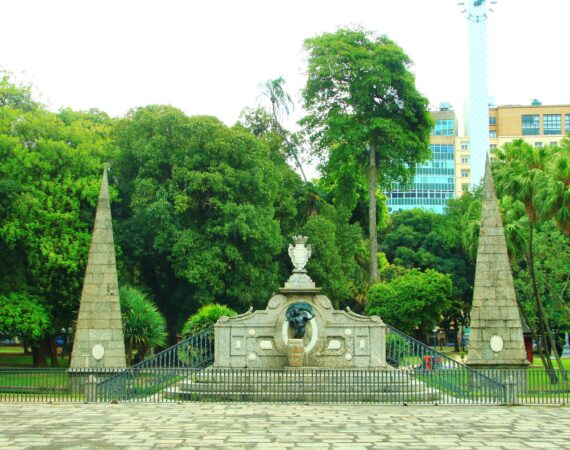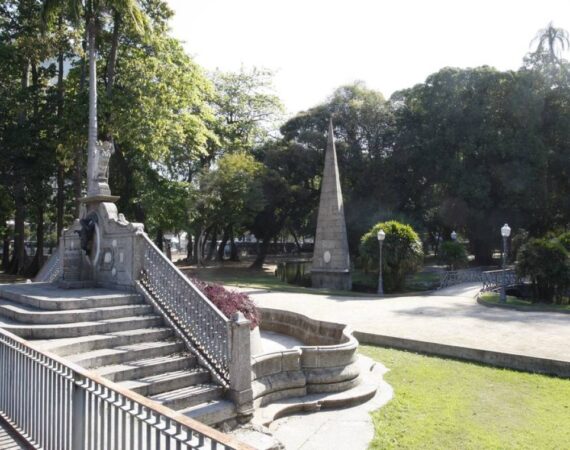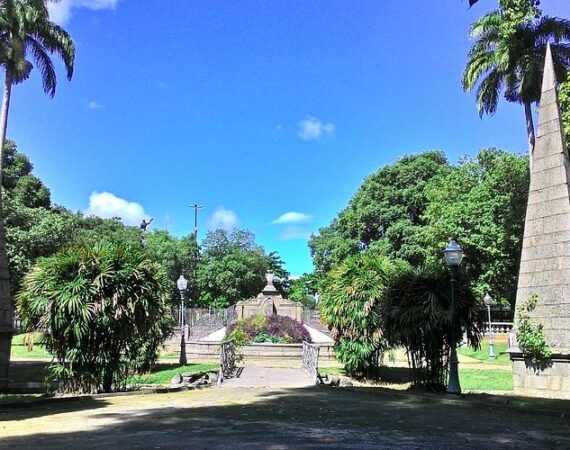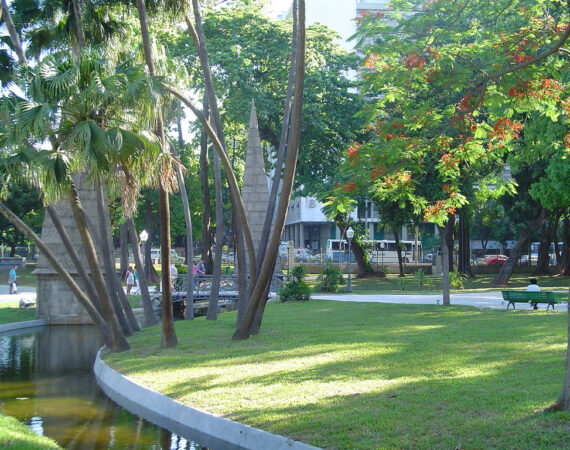PASSEIO PUBLICO PARK
The Passeio Público, inaugurated in 1783, holds the distinction of being Brazil’s first public garden and one of the oldest landscaped parks in the Americas. Located in downtown Rio de Janeiro, this historic green space marked a revolutionary step in urban planning during the colonial period, transforming a previously swampy, unsanitary area into a symbol of civilization, refinement, and European aesthetic ideals.
The project was conceived and executed by Mestre Valentim, a prominent Brazilian artist, architect, and sculptor of the 18th century. His vision brought to life an urban oasis adorned with ornamental gardens, geometric pathways, water features, fountains, and allegorical sculptures, many of which reflected Enlightenment values and celebrated the natural and cultural riches of Brazil. His work at the Passeio Público was groundbreaking, blending French and Portuguese influences with local materials and artistic sensibilities.
A Center of Culture and Society
From its earliest days, the Passeio Público was more than just a garden; it served as a social and cultural hub for Rio’s residents and visitors. It became a fashionable meeting place for intellectuals, artists, politicians, and members of the aristocracy, playing a central role in the urban life of the capital throughout the 18th and 19th centuries.
Redesign and Revitalization in the 19th Century
In the mid-19th century, the garden underwent a significant transformation led by Auguste François Marie Glaziou, a French landscape architect invited to Brazil by Emperor Dom Pedro II. Glaziou reimagined the park in the romantic style, softening the garden’s symmetry and introducing winding paths, new tree species, and more naturalistic arrangements, in line with the aesthetic tastes of the time. This revitalization preserved Mestre Valentim’s legacy while adapting the space to evolving cultural trends.
A National Heritage Site
In 1938, the Instituto do Patrimônio Histórico e Artístico Nacional (IPHAN) declared the Passeio Público a national cultural heritage site, recognizing its immense historical, artistic, and landscape value. Today, the garden stands as a rare and precious example of 18th-century urban design in Brazil, offering insight into the city’s colonial past and its enduring relationship with public space.
Legacy and Importance Today
Despite the passage of time and the challenges of urban development, the Passeio Público remains a symbol of Rio de Janeiro’s artistic and cultural identity. Restoration efforts and heritage protection continue to preserve its architectural and botanical elements, allowing new generations to experience this landmark as a place of leisure, reflection, and historical connection.
Whether appreciated as a green refuge in the heart of the city or as an open-air museum of colonial art and design, the Passeio Público continues to embody Brazil’s complex and rich cultural heritage.
R. do Passeio – Lapa, Rio de Janeiro – RJ, 20021-280






